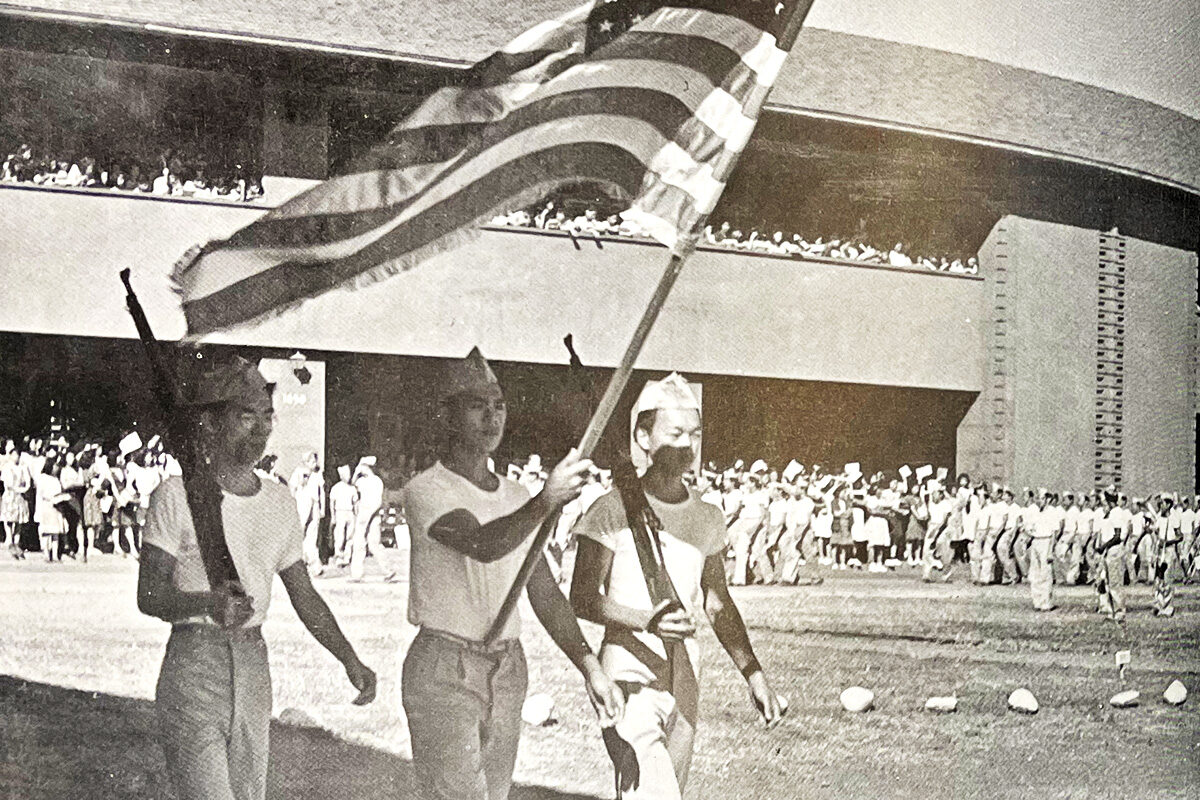Territorial Period of Hawai‘i
Timeline & Context
Hawai‘i’s Territorial Period (1900-1959) was the interim era during which the islands were made American. Led by a politically and financially powerful White minority, this group set out to transform Hawaiian society and its people from the top-down through their control over public and private institutions. The public-school system was one such institution critical to this process.
Raising the American flag at ‘Iolani Palace, 1898
Public domain, via Wikimedia Commons

Baldwin High School JROTC, 1944
HSPLS
Americanization through the School System
Once Hawai‘i formally became a U.S. territory in 1900, White schoolmen (school administrators and local politicians) implemented an aggressive Americanization campaign in the territory’s public schools. By removing Hawaiian culture, history, and language in the schools and replacing it with American civics and the English language, schoolmen sought to rewrite Hawai‘i’s past by establishing the islands as an American possession since the arrival of American missionaries in 1820. They did so with the intent of justifying America’s presence in the minds of the local population and convincing a skeptical nation that Hawai‘i was American.
Native Response
Far from passive, many Native Hawaiians resisted Americanization efforts in the public schools. Each in their own way, Native Hawaiian students, teachers, lawmakers, and members of the community fought to preserve and protect their language, culture, and identity through their active participation in the very institution trying to assimilate them: schools. Explore their stories.

Washington Intermediate School geometry class, 1954
HSPLS
Student Experiences
Learn More about Student Experiences

Children's Playground, c. 1926
UHM Library Digital Image Collections, fil4038
Teacher Experiences
Learn More about Teacher Experiences

Weaving lauhala hats in Kona
Hawaii State Archives, Photograph Collection, PP-33-6-021
Community Experiences
Learn More about Community Experiences
